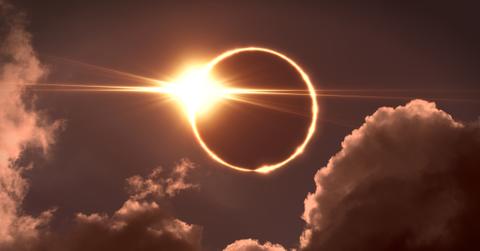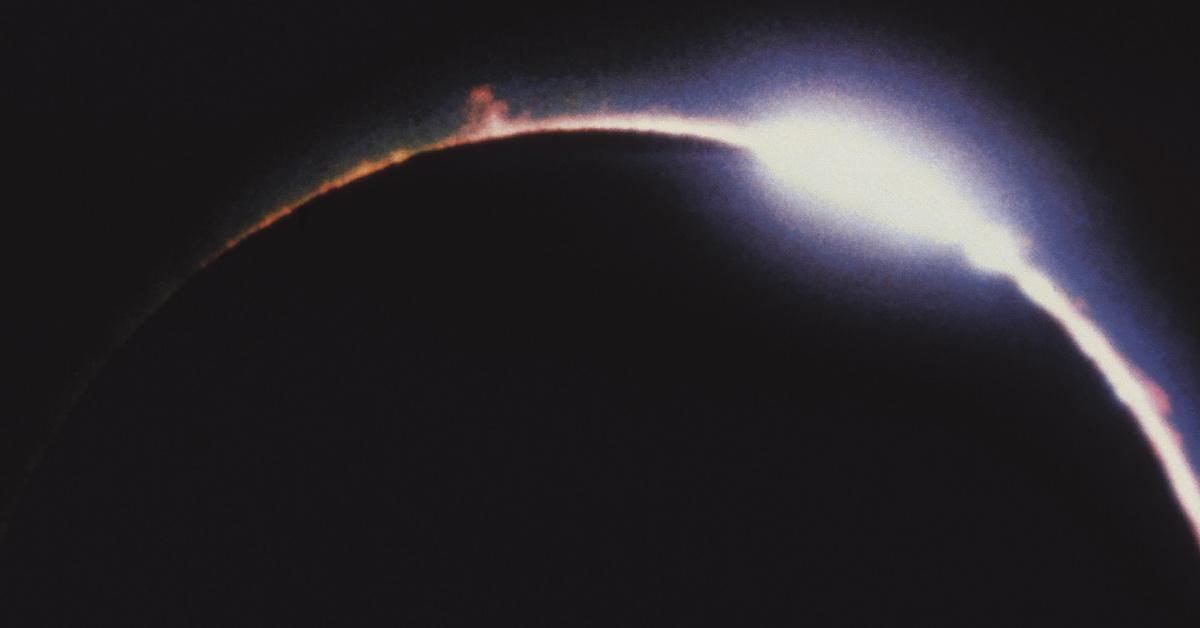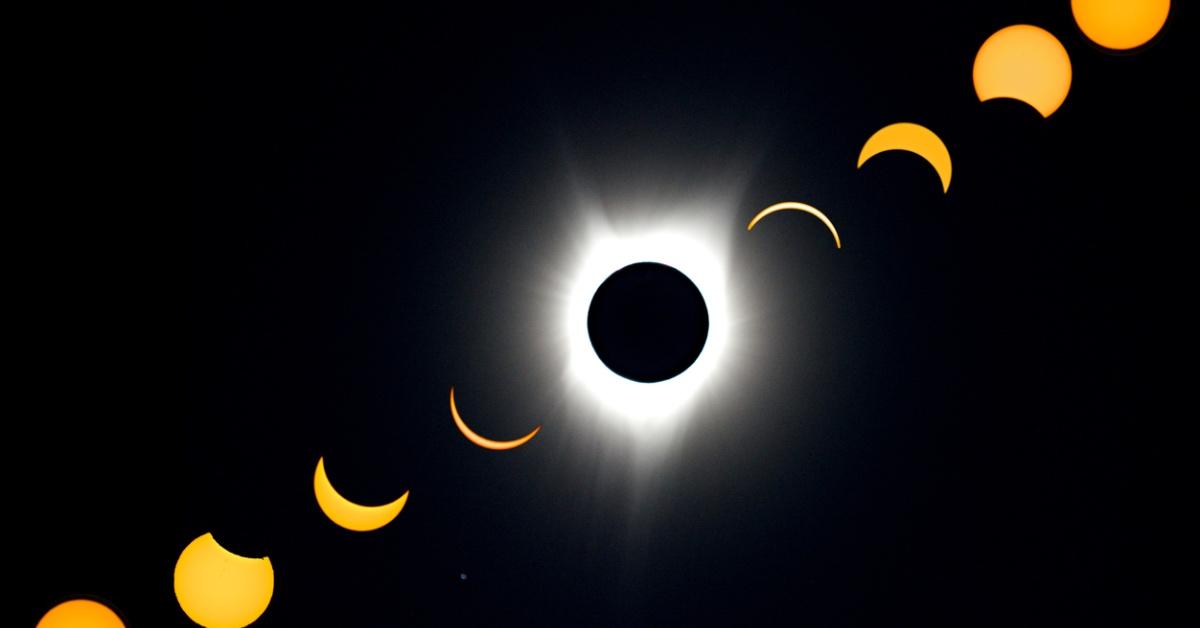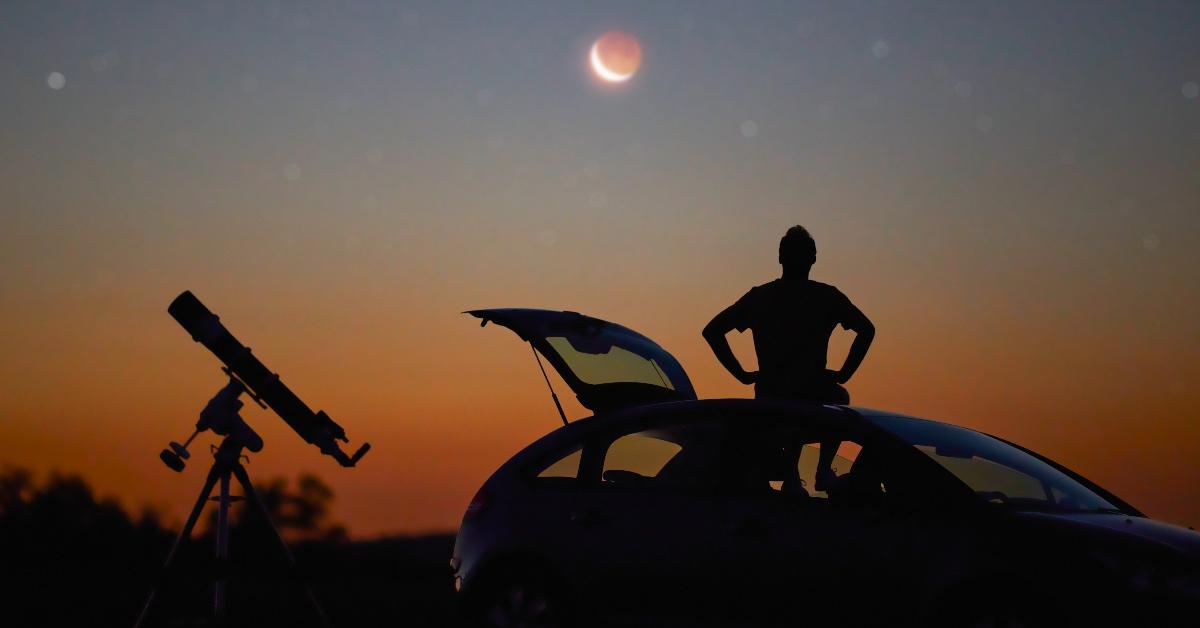The 2023 "Ring of Fire" Eclipse Will Be Visible From 8 U.S. States
Published Oct. 9 2023, 1:37 p.m. ET

The Gist:
- On Saturday, Oct. 14, 2023, a rare "ring of fire" solar eclipse will be visible in North America in 8 U.S. states.
- The last time this kind of solar eclipse was visible was 2012.
- There will be a total solar eclipse in April 2024.
Being able to experience the mysteries of the cosmos is an exciting phenomenon. We go outside with telescopes to try and watch meteor showers and full moons, so when a rare opportunity presents itself, people are prepared to get in their cars and travel to see a solar eclipse happen.
During the "ring of fire" solar eclipse on Oct. 14, 2023, the event will be visible from eight U.S. states, and people are already traveling to perceive the

On Oct. 15, 2023, the solar eclipse becomes a "ring of fire."
According to CNN, the "ring of fire" eclipse will begin at 9:13 a.m. PT (12:13 p.m. EST) in Oregon and last until roughly 12:03 p.m. CT in Texas.
During the solar eclipse, the moon will "cover over 90 [percent] of the sun's surface as it passes in front of it," which is different than a total eclipse, at which point the moon would cover 100 percent. The uncovered part of the sun creates the "ring of fire" look.
The U.S. states where the eclipse will be visible include Oregon, California, Nevada, Utah, Arizona, Colorado, New Mexico, and Texas, per Science.org.
Then, the solar eclipse path continues through parts of Central and South America (specifically Mexico, Belize, Honduras, Costa Rica, Panama, Colombia, Brazil, and Guatemala) before finishing over the Atlantic Ocean. There will be another total eclipse in April 2024, so if you miss the solar eclipse in 2023, you have another viewing opportunity.

If you're interested in seeing the exact path of the eclipse, you can check out this interactive map created by French eclipse expert Xavier Jubier. You can also watch the official NASA solar eclipse broadcast available for free streaming on their website.
According to Mark Littmann, a professor of science writing, the sky may take on some unusual characteristics in addition to the eclipse. Littmann told CNN, "The sky may take on some unusual color in terms of a steely gray flatness, blues may be a different color. These things depend on the weather, too. It may cool down just a little bit. It gives you a kind of an omen of what a total eclipse would look like."

Why isn't it safe to look directly at the sun during a solar eclipse?
Looking directly at the sun during a solar eclipse is unsafe without solar viewing or special eclipse glasses. You could also use a pinhole projector.
According to PreventBlindness.org, the reason for this is that you could get retinal burns or "eclipse blindness." Exposure to that sunlight could damage or destroy retina cells, giving you temporary or permanent eye damage.
You might not even notice you have eye damage, as it causes no pain and often starts to appear hours or even days after viewing a solar eclipse without proper eye protection. As such, it's better to be safe than sorry, so don't forget your protective gear if you plan to view the solar eclipse!